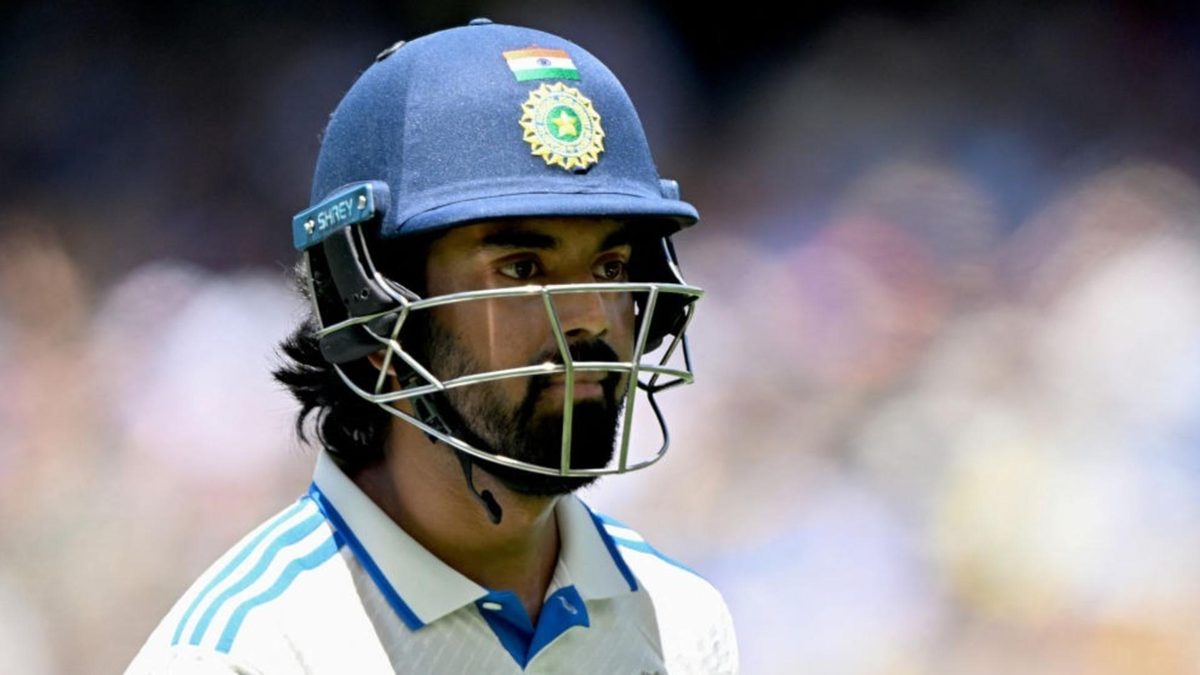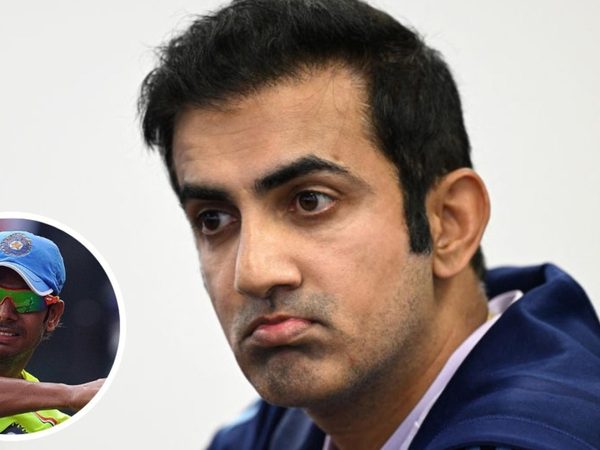
In the 23rd over, Australia appealed for Rahul to be caught behind off Mitchell Starc, as the ball passed close to the bat on its way through to keeper Alex Carey. He was given not out by the on-field umpire, which prompted a review of the decision from Australia.
The third umpire then examined the incident again, with the Snicko technology showing a spike as the ball was close to the bat, but Rahul's bat was in contact with his pad as well, so it was unclear where the spike had come from, based on the camera angles from behind the batter and the leg side.
Read more: The extraordinary stat that helps explain Virat Kohli's day one dismissal
The TV umpire requested replays of the incident from front-on and offside angles, but those were not provided. The initial broadcast angles also appeared to show a deviation as the ball crossed the bat, causing confusion over whether or not Rahul had nicked it.
The third umpire then ruled that Rahul had indeed nicked the ball, and asked the on-field umpire to reverse his decision, sparking controversy among viewers.
Did the third umpire break protocol during the DRS process to give KL Rahul out?
Amid the sea of reactions, a few suggested that the correct protocol had not been followed in the course of making the decision.
According to sections 3.3.6 and 3.3.7 of Appendix D of the playing conditions of the World Test Championship, the relevant points on the DRS protocol are as follows: "If despite the available technology, the third umpire is unable to decide with a high degree of confidence whether the original on-field decision should be changed, then he/she shall report that the replays are ‘inconclusive’, and that the on-field decision shall stand. The third umpire shall not give answers conveying likelihoods or probabilities.
"In circumstances where the television technology (all or parts thereof) is not available to the third umpire or fails for whatever reason, the third umpire shall advise the on-field umpire of this fact but still provide any relevant factual information that may be ascertained from the available television replays and other technology."
Not providing the third umpire with the two angles he requested were most likely down to a failure of technology, which is covered in the second point. In such a case, the third umpire must use the available technology to take a call.
Also read: Longest ducks at No.3, full list: Devdutt Padikkal enters top-five with 23-ball stay
There is no stipulation for third umpires to use every possible camera angle, and they are not to provide likelihoods or probabilities, as outlined in the first point.
In order to overturn an on-field call, the third umpire must be able to decide with a "high degree of confidence". This is a subjective measure, and can differ between umpires and viewers.
The decision itself can be debated (i.e., whether the evidence was conclusive enough). The technology and finer details on the cameras used have also been called into question. However, there is nothing to suggest a violation of the DRS protocol laid out as per the playing conditions.
Big issue with using broadcast (manned) cams for DRS will always create this problem. Fixed cams won’t miss the ball. Here there was no front-on available and snicko had to work off the camera from behind, where the ball was nearly out of frame AND not clearly visible #AUSvIND
— Hemant (@hemantbuch) November 22, 2024
Follow Wisden for all cricket updates, including live scores, match stats, quizzes and more. Stay up to date with the latest cricket news, player updates, team standings, match highlights, video analysis and live match odds.








